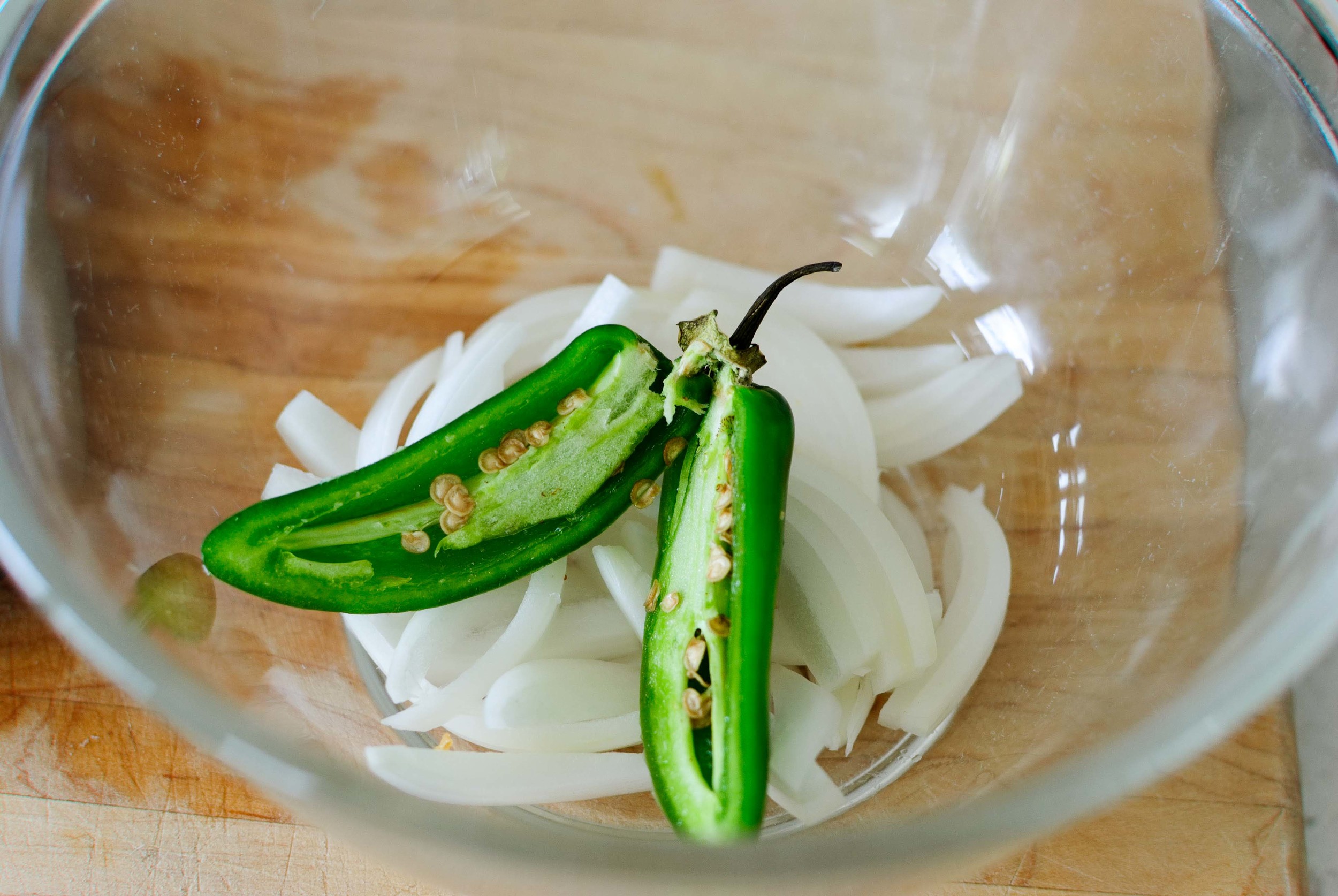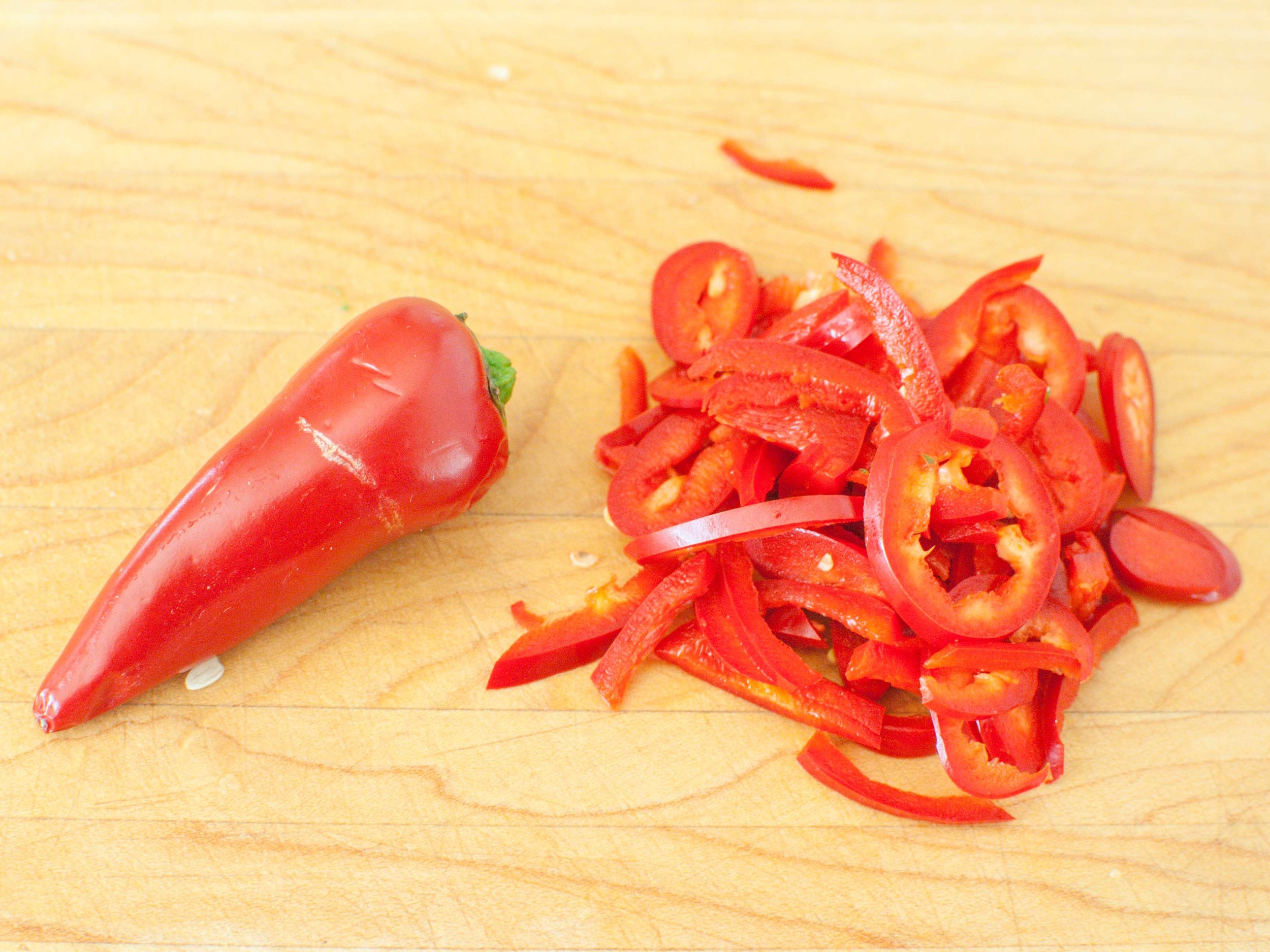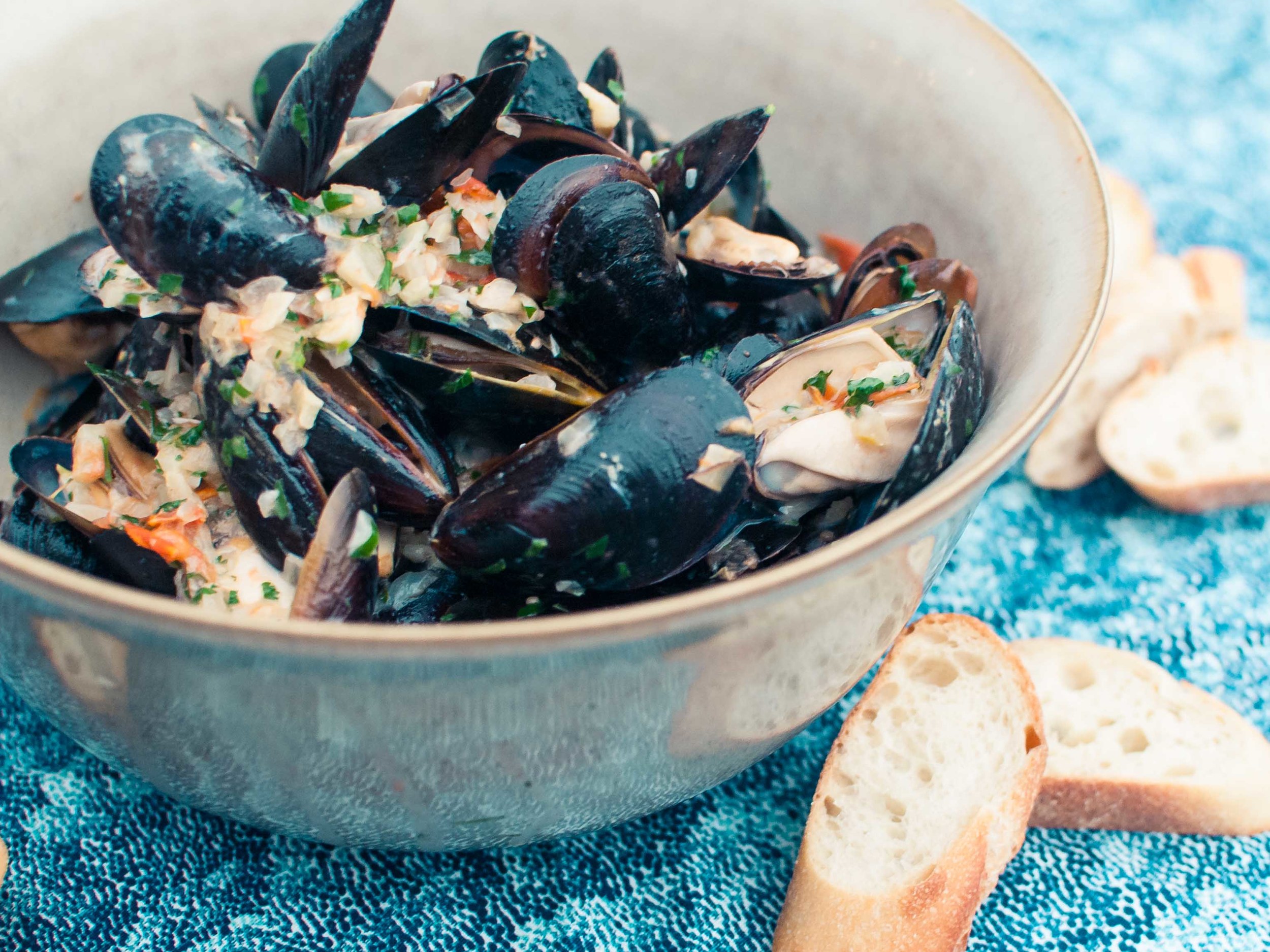Korean people love their pancakes! Kimchi pancakes, green onion pancakes, sliced fish pancake fritters, mung bean pancakes, chive pancakes with a million jalapeños . . . the list is seemingly endless. If it's a thing, it can be pancaked. I love them all, but I especially like this one because it doesn't require any ingredients you couldn't find in a standard grocery store. I can confidently speak for myself, for you, and every other living being in the world when I say: when you are craving Korean food, it must be satisfied immediately. Mung beans, Asian chives and kimchi can often require a special trip to an Asian market. Ain't nobody got time for that! These green onion pancakes are tender, crisp and beautifully golden. The mild sweetness of the cooked and aromatic green onion is absolutely addictive. If you've never made Korean food before, this is an accessible and tremendously delicious place to start.
Notes: The green onion pancake my mom made at her restaurant was 80% green onion and that's the recipe I'm sharing with you. Some people prefer less green onion and more batter and this recipe is flexible enough for you to suit your own preferences. This is a very hands on cooking process as you can tell by the photos. I use my hands to lay the battered green onions into the pan, to distribute the raw egg, and to press the pancake to create a crunchy crust. Don't be afraid to use your hands - it will be so much easier than a multitude of utensils. To reheat the pancakes, place them in a non-stick pan on medium heat and heat through on both sides to enjoy them again. Please don't put them in the microwave; that will make everyone sad.
The dipping sauce is such a great accompaniment to the pancakes - it's worth the added few steps. The onions and jalapeño impart their flavors into the liquid and the hot liquid quickly pickles the onion and jalapeño to tone down their harshness and heat.
Read More: The Shared Korean Meal
Yield: 3 large pancakes
Time: 40 minutes
2 large bunches green onions
4 eggs, divided
1 1/2 cups water
1 cup flour
1/4 cup cornstarch
2 tablespoons salt
6 tablespoons grape seed oil (or any other neutral oil), divided
1/2 cup chopped raw shrimp, divided
1/2 cup chopped raw squid, divided
Pancake Dipping Sauce for serving (see recipe below)
Rinse green onions and remove tops. Trim bottoms to make all of the green onions similar in length. Lay them on the cutting board and slice through the entire length of the vegetable - this will make biting through the cooked green onion easier and less stringy. Halve the green onions and set aside.
In a medium bowl, combine water and one egg and whisk until foamy. In a shallow pan (I used an 8 x 13 cake pan) combine flour, cornstarch and salt. Start by pouring 1 cup of foamy water/egg mixture into dry ingredients and stir gently until roughly combined - like a standard pancake mixture, wet and dry patches are OK since you don't want to over-mix the batter! From there, add more liquid a few tablespoons at a time until the batter is thick enough to hold together and coat the green onions, but is not gloopy and sticky, nor runny.
Heat a large pan or griddle on medium high heat with 2 tablespoons of grape seed oil. Add 1/3 of the green onions to the batter and toss until fully coated. Turn the heat down and arrange batter covered green onions in the pan in a single row with no space between the green onions. Turn the heat back up to medium-high and press the green onions into the pan to create a cohesive crust. Once the batter begins to brown and the green onions are heating through, scatter 1/3 of the seafood over the top of the pancake. Beware of oil popping at this point!
Press the seafood down into the pancake. Crack an egg into a small bowl and whisk lightly. Pour the egg over the top of the pancake, making sure to cover the seafood (the egg will help to secure the seafood to the pancake). When the seafood begins to warm and 70% of the pancake is cooked through (4-6 minutes), flip the pancake over to finish cooking and brown the second side (about 2 minutes). The pancake is done when the batter throughout the green onions is throughly cooked the edges are deeply browned and crisp. Flip the pancake onto a cutting board with the seafood and egg mixture facing up. Cut into generous bite sized pieces. Repeat two more times for a total of 3 pancakes. Serve immediately with the Pancake Dipping Sauce.
Pancake Dipping Sauce
1 cup soy sauce
1/2 cup water
1/4 cup sugar
1/4 white vinegar
1 jalapeño, halved
1 small onion, sliced thin
In a small sauce pan over medium heat, combine soy sauce, water, sugar and vinegar. Bring to a simmer until all of the sugar is dissolved. In a medium heat-proof bowl, place sliced onion and halved jalapeño. Pour the simmered soy sauce mixture over the onions and jalapeño and allow to fully cool before serving.
























